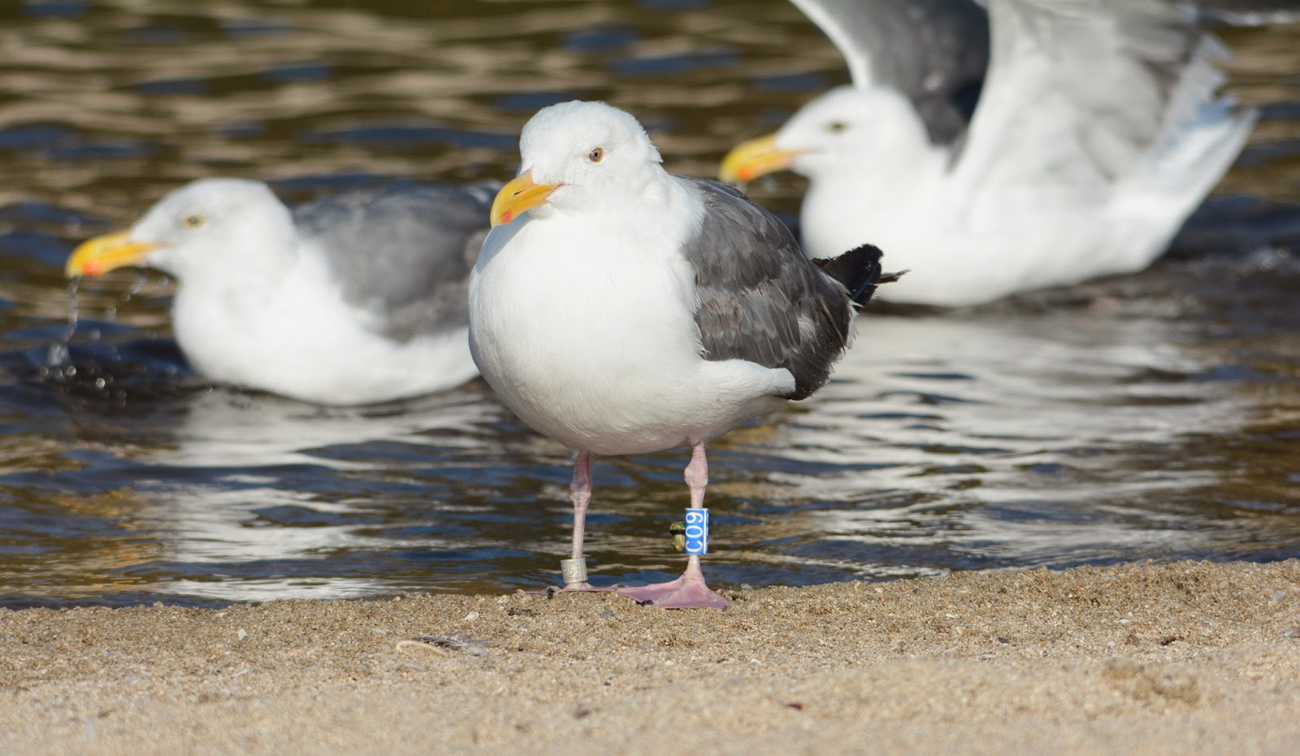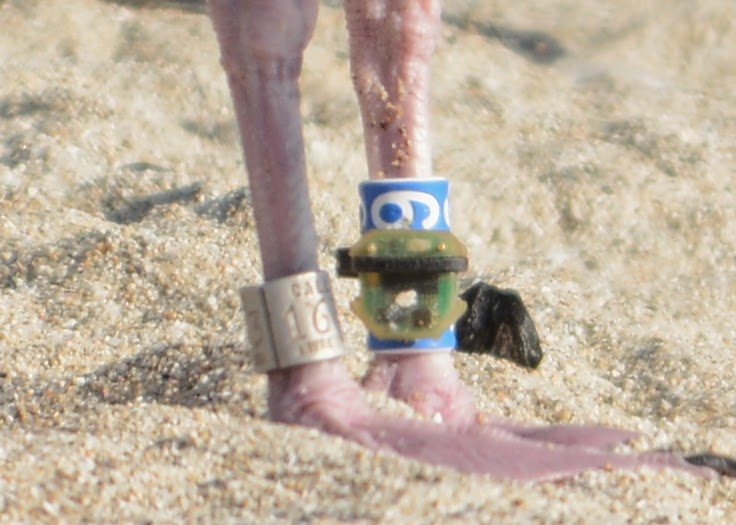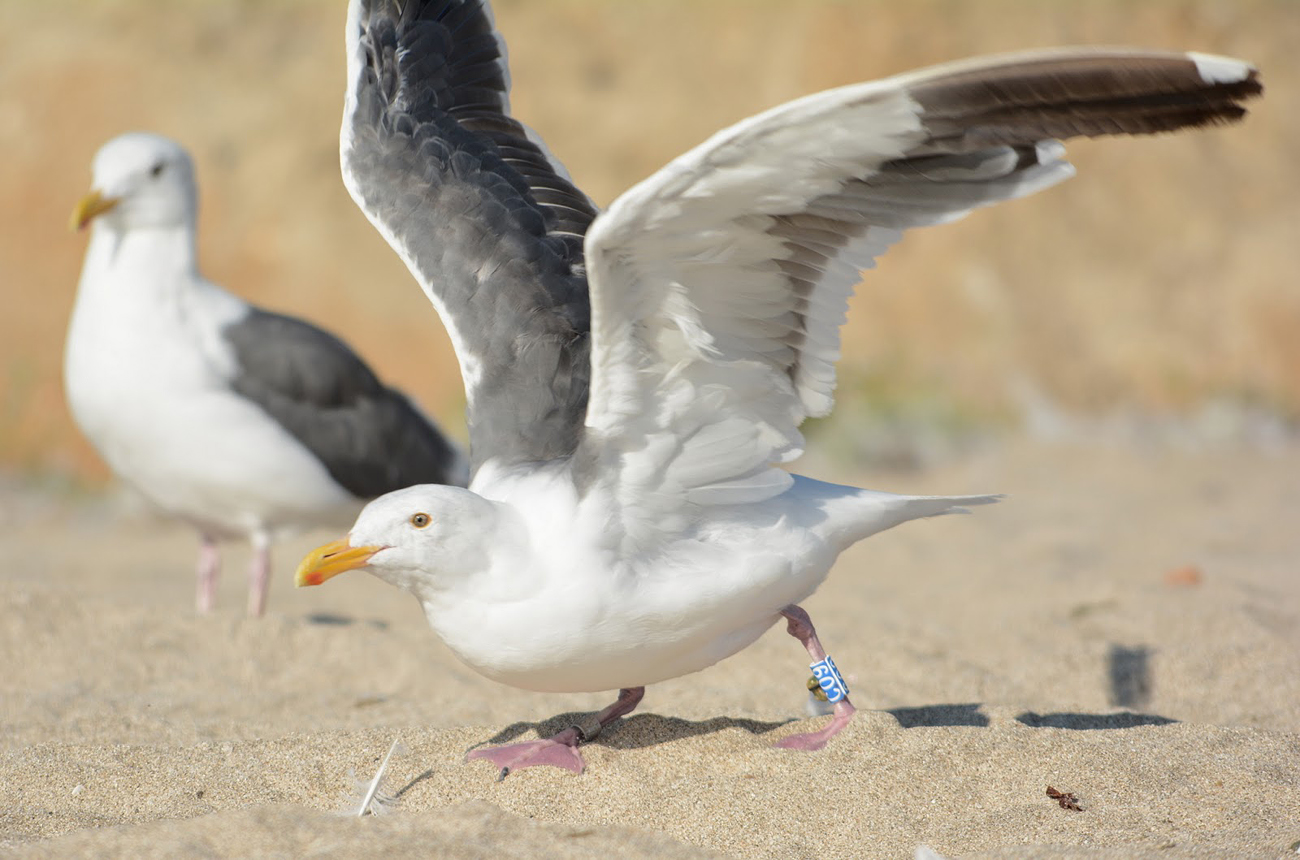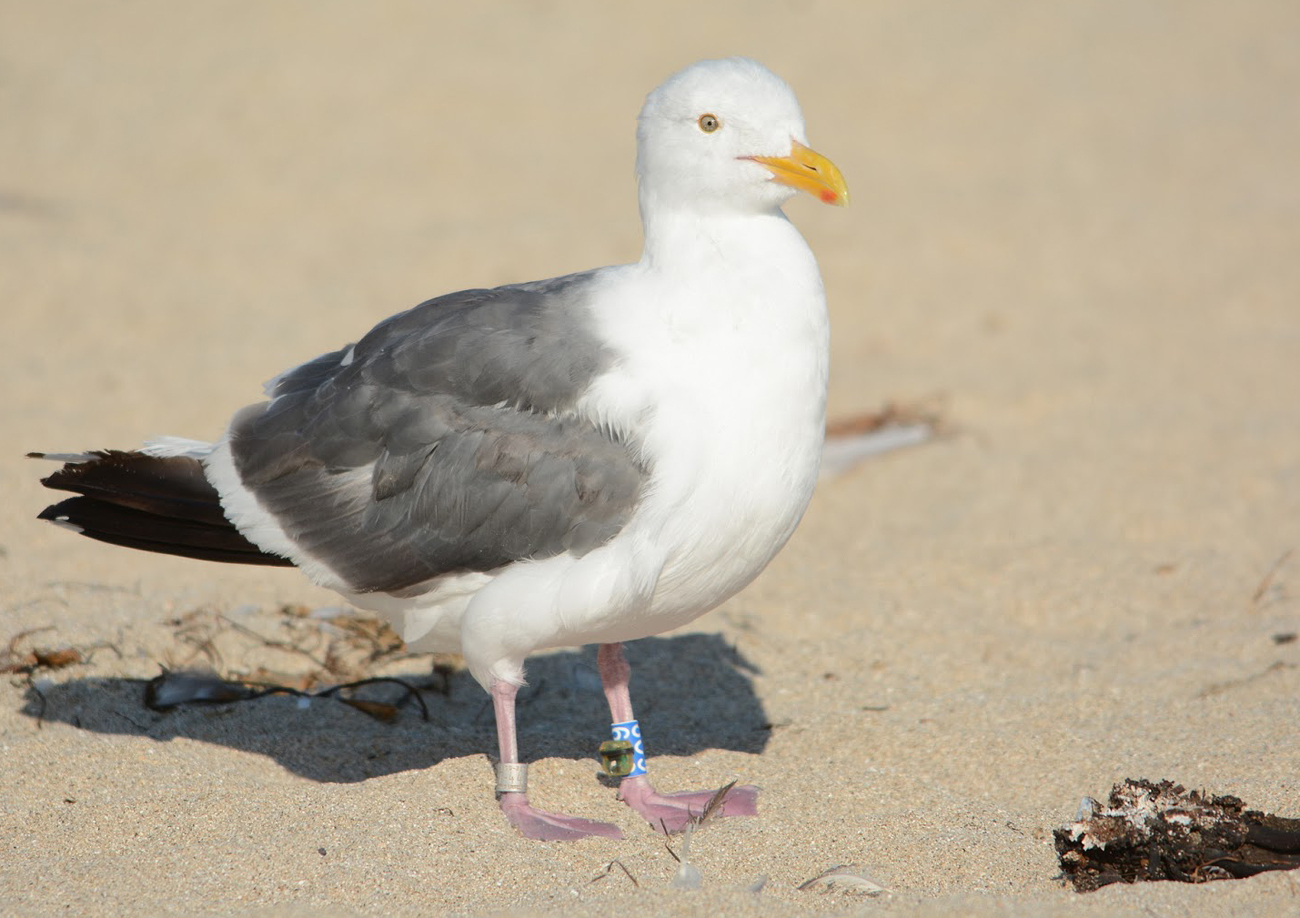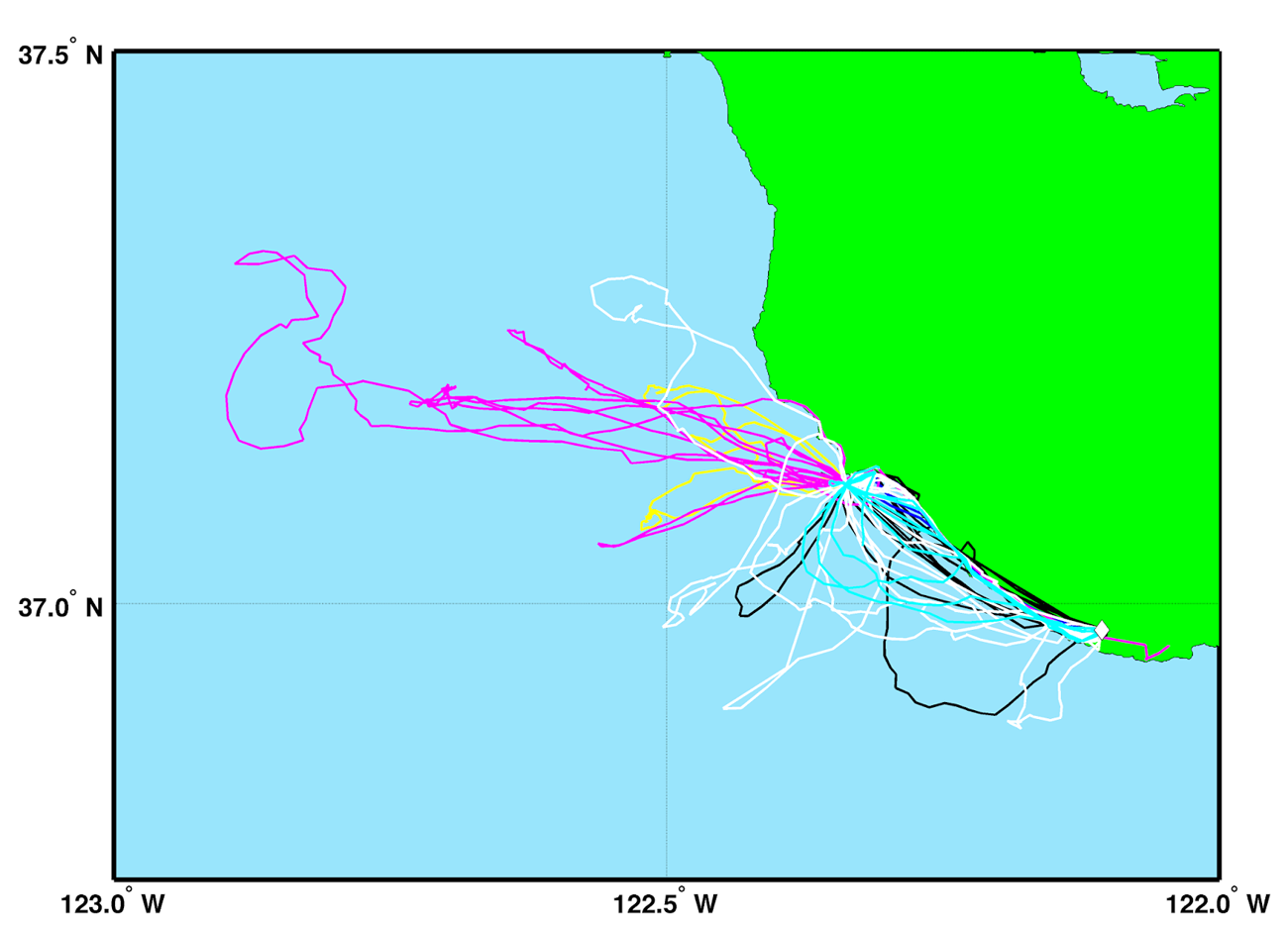|
|
Coordinators: 1cy June 2cy Jan 3cy Jan 4cy / sub-ad Jan adult Jan |
Western Gull occidentalis C09 adult, September 2014 & 2016, Half Moon Bay, California, USA. Picture: Amar Ayyash & Alvaro Jaramillo.All of the banded WEGUs with plain color bands, found in California in the past have been from the Southeast Farallon Islands. This adult type WEGU with a large blue plastic ring is not: blue C09 was banded as an adult on Ano Nuevo Island, near its nest, in 2013. This gull was banded by Dr. Scott Shaffer on Ano Nuevo Island (a small 9 acre island just off the coast between San Francisco and Santa Cruz). Scott and several of his students from San Jose State University have banded and fitted 11 Western Gulls with these blue plastic bands and data loggers (sequence C00-C10). below: Western Gull occidentalis C09 adult, September 03 2016, Pilarcitos Creek, California, USA. Picture: Alvaro Jaramillo.Bird in complete moult.
below: Western Gull occidentalis C09 adult, September 12 2014, Half Moon Bay, CA., USA. Picture: Amar Ayyash.This gull was banded by Dr. Scott Shaffer on Ano Nuevo Island (a small 9 acre island just off the coast between San Francisco and Santa Cruz). Scott and several of his students from San Jose State University have banded and fitted 11 Western Gulls with these blue plastic bands and data loggers (sequence C00-C10).
One of the objectives of Dr. Shaffer's project is to compare the foraging ecology of the gulls on Ano Nuevo Island with those from the Farallon Islands. This multi-faceted study also involves blood sampling to check for contaminants the gulls may be picking up, and to quantify/qualify bacterial and viral exposure. It's no surprise that his gulls spend time between the local landfills, but they also spend a significant amount of time offshore. Here's one of the maps he shared with me showing where some of these Western Gulls (all adults) have been:
The epicenter shown above is Ano Nuevo Island. Each color is representative of a unique individual. For the most part, the map shows much of what we already know about this species: Western Gulls are largely non-migratory (in the traditional sense) and are relatively sedentary. |
 glaucescens Glaucous-winged Gull & Western Gull occidentalis
glaucescens Glaucous-winged Gull & Western Gull occidentalis

